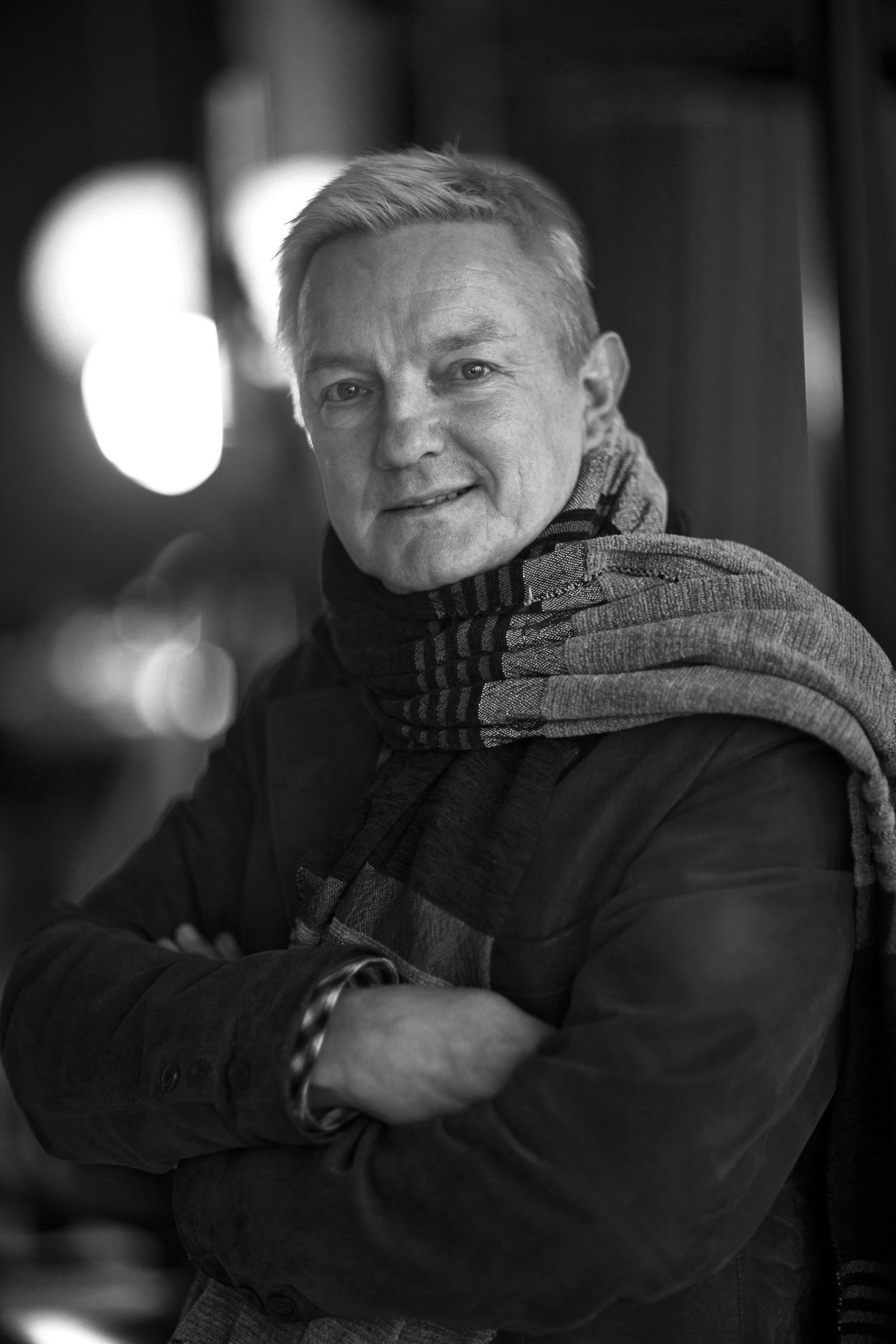Hannu Väisänen
Artist and writer Hannu Väisänen’s major popular breakthrough came in 1999 with the publication of a special anniversary edition of Finland’s national epic Kalevala, which he illustrated. His artistic career, however, had begun decades earlier. In the 1970s, he was commissioned to create a series of paintings and liturgical hangings for the Church of St Thomas in Oulu designed by the architect Juha Leiviskä. In 1989, he produced an altarpiece and a series of paintings for Kontula Church by Simo and Käpy Paavilainen. Linus and Terpsichore, on display in the Finnish National Opera foyer were completed in 1996, and a series of paintings for La Folie, an art pavilion in Janakkala, Finland, designed by the architect Hannele Grönlund, in 2006. In addition to painting, Hannu Väisänen has written the script for Kahdeksan sisäkuvaa (Eight Interiors), a Finnish television series on art, and his other achievements include the set and costume design for a Savonlinna Opera Festival production of Tannhäuser.
His first novel, Vanikan palat, was published in 2004. The positive reception encouraged Väisänen to pursue further literary endeavours, and Toiset kengät, his second novel, went on to win the prestigious Finlandia Prize for fiction. To date, he has written a total of six novels, and his columns have appeared in numerous Finnish newspapers and magazines, including Helsingin Sanomat, Kaleva, Glorian Antiikki and Lääkäri. Combining art and literature has proved challenging yet artistically rewarding for Hannu Väisänen and has helped him to deconstruct some of the myths typically associated with creative endeavour.
Hannu Väisänen was awarded the Pro Finlandia medal in 1993 and the Kiitos kirjasta medal in 2004. These were followed by the Finnish State Prize for Visual Arts in 2007, the Order of the Lion of Finland in 2008 and the Finnish State Prize for Literature in 2015.
Hannu Väisänen has lived in France since 1990, becoming a French citizen in 2015. His new dual nationality has compelled him to confront notions of European cultural heritage and to explore the possibilities it offers and the future it faces. Väisänen says he has a strong affinity for those who are defending it against attempts to bring it down.
